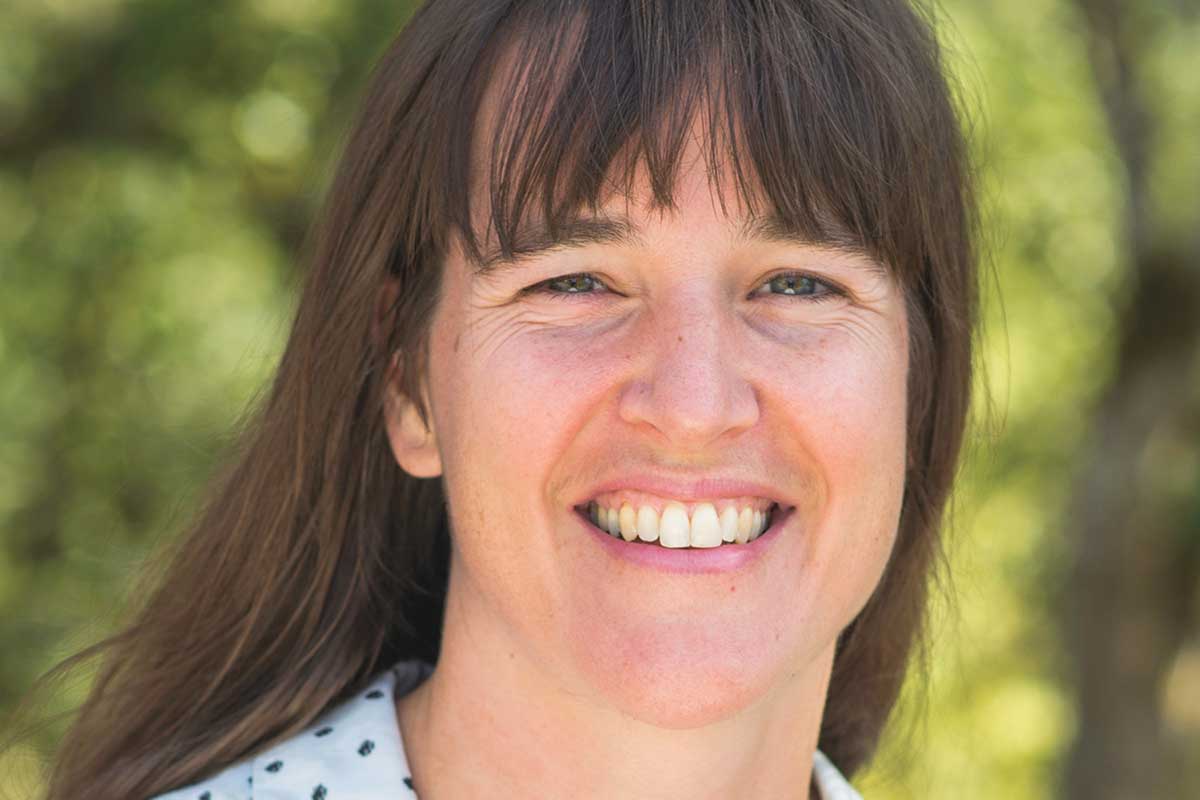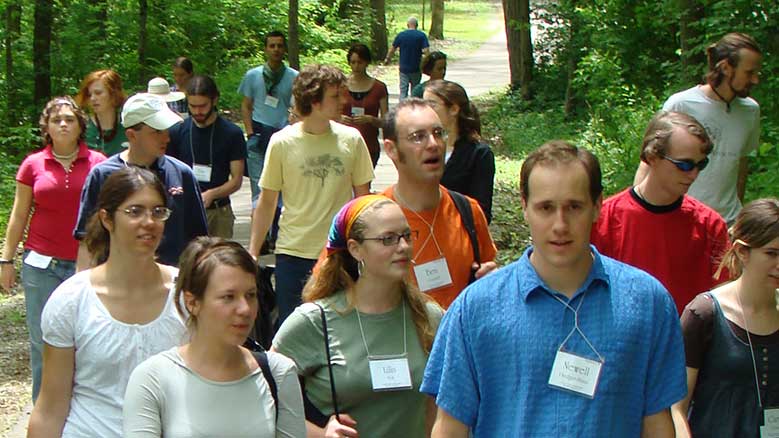How might Friends improve the spiritual discernment within their nominating committees? I posed this query to my interest group, “Nominating: Discernment and Delight,” at the 1999 Gathering in Kalamazoo, Michigan. The incentive to sponsor this interest group arose out of a recent concern that has come from my experience as clerk of the nominating committee for the Central Committee of Friends General Conference.
Before serving in this capacity, I served as clerk of Atlanta Friends Meeting and then of its nominating committee. I have also watched the nominating process in Southern Appalachian Yearly Meeting and Association as well as other yearly meetings. In all these cases, the process is chaotic at times. At yearly and quarterly meetings, nominating committee members rush around accosting attenders, pleading for their commitments. Committee caucuses may be held in a noisy dining hall.
At the monthly meeting, the committee may not begin its discernment until shortly before its report to the business meeting is due. Frantically, names are suggested and discounted for some reason, often because the people are “too busy.” The committee may caucus by phone.
Where is the spiritual discernment in this scramble?
Recently, I became aware of the nominating committee process of Strawberry Creek Meeting in Berkeley, California (see sidebar, below). I found it grounded in the process of meeting for worship and that worship kept the goals of the committee in focus. The FGC committee has used the process with, for me, moving spiritual results. Out of our worship a person’s name arose that surprised us all. When I approached the person with the outcome of this process, he said that he had been looking for a leading in a similar direction. I am convinced that the Spirit guided us together.
Curious about the history of the Strawberry Creek process, which lists Eleanor Warnock’s name as its author, I wrote to the meeting. The present clerk of their nominating committee, Leslie Leonard, replied that the document was written in 1980, “in the early period of our history, and fortunately several of our founding members felt compelled to articulate the process for the many new seekers in the meeting.”
Leonard went on to observe “that the document has been passed on through the successive nominating committees and has pride of place in our nominating binder. . . . We find it a valuable, but difficult, process to keep before us. All too often the press of business and the rather substantial slate we are called upon to fill take precedence over this kind of careful discernment. When we have particularly critical or difficult nominations, however, we find ourselves moving naturally into the deeper, richer silence out of which the process Eleanor describes flows.”
The health of many meetings depends on the discernment of the nominating committee. Basic is the question whether filling the meeting’s personnel needs depends on volunteers or discernment, or some of both. As one attender at the interest group asked, “What do you do when people volunteer for a job for which they are not qualified?” Another observed, “You have to know how strong the committee is to include the oddball.” One added, “Sometimes you need an oddball to get the committee to rethink things.”
During a visit to Beacon Hill Meeting in Boston, I learned that the meeting had changed the name of the nominating committee to the Gifts and Leadings Committee. This change was more in keeping with their discernment process. Margaret Benefiel told me that they used the Strawberry Creek process regularly. She also recommended the writings of Elizabeth O’Connor, one of the original members of the Church of the Savior in Washington, D.C., who writes that a spiritual life rises from a journey inward, and a journey outward. The inward journey requires an understanding of oneself, an engagement with God, and a commitment to one’s community. The outward journey is one’s servanthood to the wider world. Thus we ask of our members: What are your gifts that can minister to your communities?
I, like some other Friends, flinch when I hear the word ministry; it conjures up visions of preaching. But Friends’ ministry is really service in every aspect of our lives, whether preparing the hospitality for rise of meeting, clerking the meeting, or a job at a food bank. My concern about how Friends discover these gifts has led me to some observations that may help focus on the nominating process.
The nominating committee is a standing committee that must do its work during the whole year. In some small meetings it is a committee of the whole. Its first role is to be aware of the gifts and interests of all the meeting’s attenders. For the monthly meeting, the roster of the participants in its life should be annotated with such information. Representatives in quarterly and yearly meetings need to bring the same information with them. Nominations should not be limited to the names of people who turn up at these meetings.
How is the membership of the committee chosen? Is it self-perpetuating? Is it made up of coerced volunteers? Is it the last committee on the meeting’s agenda? Or is there a naming committee whose charge is to form a nominating committee that represents the diversity of the meeting?
The nominating committee is clear on what is expected for service in every office and committee. Many meetings rely on clerks of committees to be chosen from within the committees. Without nominating committee discernment, as another interest group attender recalled, “Sometimes this leads to nonfunctional committees.” An attitude of “I guess I’ll do it if no one else wants to” is not good order.
The committee recognizes that one of its duties is to nurture the future leadership within the meeting. Frequently the same names are just cycled between offices and committee clerkships. Where will the next generation of seasoned leaders come from?
Nominating is not a process of filling in the blanks—although I must admit to that desire myself when I am constructing the roster for the next year. Sometimes the inability to find names is telling us something. One clerk of a yearly meeting nominating committee said that when she couldn’t fill in the blanks, she recommended laying down several committees. The yearly meeting agreed to all but the finance committee being laid down.
Finally, discernment comes out of worship. Rather than being an apparent model of Quaker chaos, the nominating committee can be a model of spiritual discernment. All it takes is time and the willingness to leave the blanks blank.
The delight comes from knowing that the process works. An added delight is meeting some wonderful people during this process.
Another former clerk of Atlanta Meeting and the present clerk of its nominating committee, Mary Ann Downey, summarized these observations as queries:
- Do members of nominating committees seek to know the gifts and
interests of all meeting members and attenders, planning throughout the year how best to match the meeting’s needs to these gifts? - Does the naming committee seek to represent the diversity and experience of the meeting when choosing the nominating committee?
- Are members of the nominating committee well informed and current on what is required for each office and committee?
- Do you provide the kind of training and nurturing that will furnish new leadership?
- Are you careful to wait for discernment and direction by the Spirit before asking Friends to serve? Do you encourage those called to take time to discern if they are led to accept this call?
- Are there committees or offices that are no longer needed? Are positions filled too often by the same few people?
The Nominating Committee Process of Strawberry Creek Monthly Meeting
1. Focus on the position (like clerk) or the committee to be considered. Nominating committee members remind each other first of the functions of the position or committee, then on the personal qualities necessary to fulfill those functions. If no one present is dear on these functions, do not proceed until the next nominating committee meeting when the relevant information will have been found. When focusing on a committee to be appointed, questions of age and gender balance are relevant. (In the following steps, it is assumed that an individual is being sought, say, for clerk. When a whole committee is being sought, the process changes somewhat in the number of names presented and the number that rise to the top. This process can also be adopted for finding yearly meeting themes and speakers.
2. When all committee members feel they understand what is being sought, the committee goes into silence out of which members identify whatever names occur to them, without commencing on the name. (Comments wait until step 3.) One person is responsible for writing down all these names, though other members may also write them down.
3 • When it seems clear that no more names are forthcoming, questions may be asked about names that are unfamiliar to someone on the committee. When all are clear that they know enough about each name, the committee enters into silence again. (Note: comments like “I don’t think she’ll do it” are not relevant here; only descriptive comments should be shared.)
4. One person slowly reads all the names that have been suggested. Out of the silence that follows, each committee member identifies the one name that rises to the top for them. Again, no comment is given on any name. Sometimes the clerk will move to stop someone who begins to comment. If no name rises to the top for someone, s/he can simply state that.
5. When all committee members have shared who rose to the top for them, there may be only one name, and the clerk can call a sense of the meeting on that name. If one name seems to dominate, the clerk may ask if the committee is dear on that name or wishes to continue.
6. If the clerk feels there is no sense of the meeting, committee members then share why they think a given name rose to the top for them. After this sharing, committee members go back into the silence and once again identifY the one name that rises to the top for them.
7. Usually the clerk will be able to call a sense of the meeting after this second period of worship. If not, the committee needs to discern the next step.
Strengths of This Procedure:
1. The person to be asked to serve is chosen out of worship and from a sense of their gifts for a particular task, so that gifts and sense of call can then be shared with the person when s/he is asked to serve. Since the nominating committee has reviewed the functions of the position under consideration, the person asking the chosen person can also articulate the responsibilities of the position in which s/he is being asked to serve.
2. The process doesn’t focus on what gifts people don’t have. There are perfectly fine names who are just not right for a given position. In worship, these names will just drop away without any comment on what they can’t do.
3. The person to be asked to serve is not chosen by elimination, i.e., when a name is given, a committee member can’t say “They are too busy” or “They don’t get along with so and so” or “They are disruptive on a committee.” If these things are true and relevant, that person’s name will not rise to the top and no negative comments need be made.




